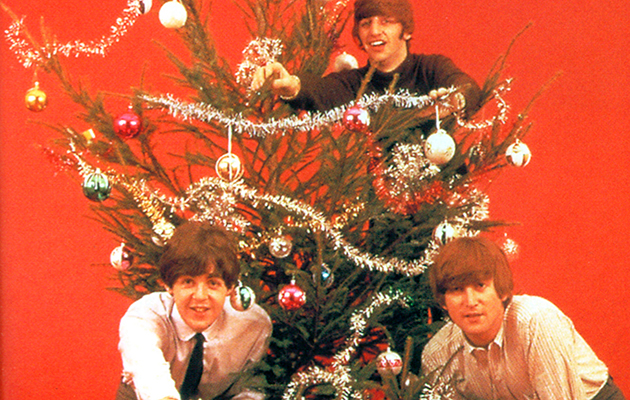Taking a proposition and testing its boundaries – if it was what The Beatles did with their music, then it was what they did with their seasonal obligations, too. From 1963 to 1965 the group had progressively stretched Tony Barrow’s original concept of a “thank you” record, but kept the idea essentially intact. The following year, they broke free of it completely.
By Christmas 1966, The Beatles were no longer a phenomenon that might be screamed at in public. With the band having retired from public performance that August, they were now solely to be experienced through their records, their retreat into the studio both about driving their music forwards, but also a tactical withdrawal. The public that made them stars was also the public that screamed through their concerts. The studio was a sanctuary: a place where they might hear themselves think.
The public seemingly isn’t much on The Beatles’ minds for their 1966 record, “Pantomime”. Much of the same good humour is there: the record is bookended by a McCartney piano knees-up called “Everywhere It’s Christmas”, and elsewhere features a sequence of disconnected, humorous bits. As it has across the arts, here narrative has been replaced by collage. The tone ranges from Milligan-esque absurdity – one segment’s called “A Rare Cheese (Two Elderly Scotsmen)” – to satire of documentary TV.
If there is a halfway house between The Goon Show and Monty Python, it’s probably to be found here. It’s not awfully funny, but it is a self-confident, hermetic product of the studio – just like the Beatles records you could buy. If, as Hatton thought, Beatle humour had become a way of drawing people in, here it had reverted to insularity. They certainly weren’t thanking anyone for buying their records.
For The Beatles, the studio was a paradoxical kind of retreat: a haven from the more arduous duties of public life, but also a place from which they could reach, and define their audience. In July 1967, the One World broadcast invited 400 million worldwide TV viewers to watch them perform “All You Need Is Love”. Even if it couldn’t manage it on the same scale, the Christmas single of that year conveyed a similar sense of empathy and fraternity at the festive season.
At the end of the record, George Martin announced, “They’d like to thank you for a wonderful year…” In the six-and-a-half minutes before, the band delivered a gift to their fans as priceless as Tony Barrow had originally conceived: something that sounded of a piece with their work of that year. This, thought lost, then discovered at at the time of Anthology in 1994, was “Christmas Time Is Here Again”.
“You can count on one hand the sessions that were fun, but this was one of them,” remembers Richard Lush, second engineer on this and many Beatles recordings between 1966-1968. “Some things like ‘Mr Kite’ went on for three or four days just to get the backing track done. I wouldn’t say they were serious… but they were seriously concerned that something had to be right.”
“Christmas Time Is Here Again” is a joyous composition in which the title is repeated ad nauseam, interspersed with some enigmatic additional words (notably: “O-U-T spells ‘out’”…). It has the feel of a Lennon song, though Richard Lush feels it “typical of Paul”. First engineer Geoff Emerick thinks it could have been done entirely on the hoof. A point on which all are agreed are its joyful nature, a group of one mind, at the peak of its powers, having fun. “When they got round the vocal mic they became schoolkids again,” remembers Emerick. “Someone would say something mundane, another one would pick up on it – and that’s how it would happen; they would run down the stairs to the studio.” Spontaneity seems to have characterised the whole session. The fact the record was recorded in EMI’s smaller Studio 3 suggests it was a last-minute decision, another artist using their customary Studio 2. Likewise the time slot: between 10pm and 2.45am.
“If you worked with The Hollies you knew you were going to work from 2pm to 10pm because they would want to go to the pub,” remembers Richard Lush. “With The Beatles, they might say they were going to start at 2pm but not turn up til 7pm – then they would go ’til four in the morning. They were the only people who would go that late.”
“Christmas Time Is Here Again”, as Lush remembers it, joins a select band of Beatles tracks (“Hey Bulldog”, “Everybody’s Got Something To Hide…”) particularly blessed by the mood in the room. “They’re examples of sessions where everything came together quickly and they had a really good vibe. They were in a great mood and played great. The ‘Pepper’ reprise is another one. There was never any pressure on that session – they were just having a laugh.
“It was a favourite of Geoff’s and mine during that period,” says Lush. “Probably because it was happy.”



